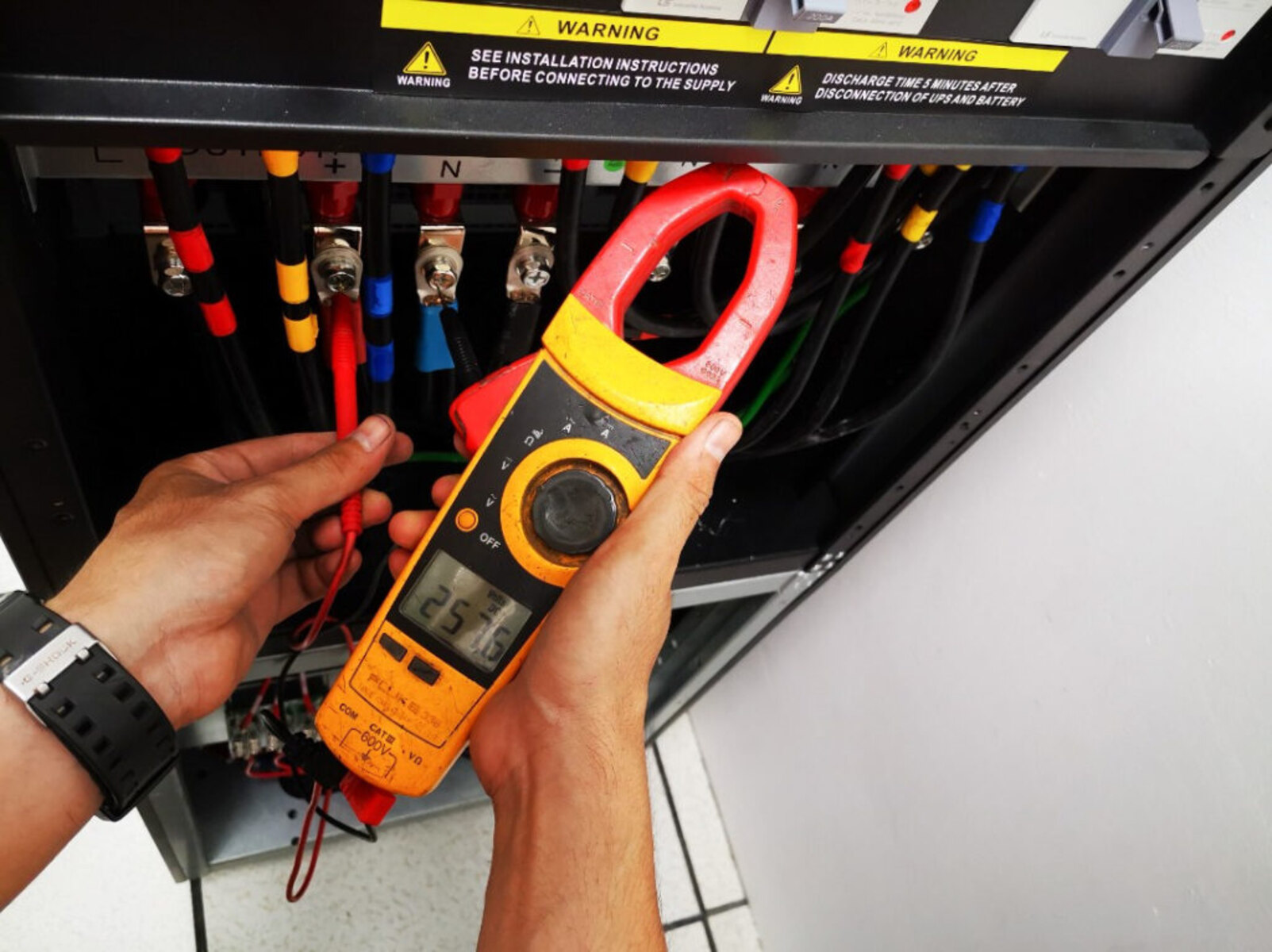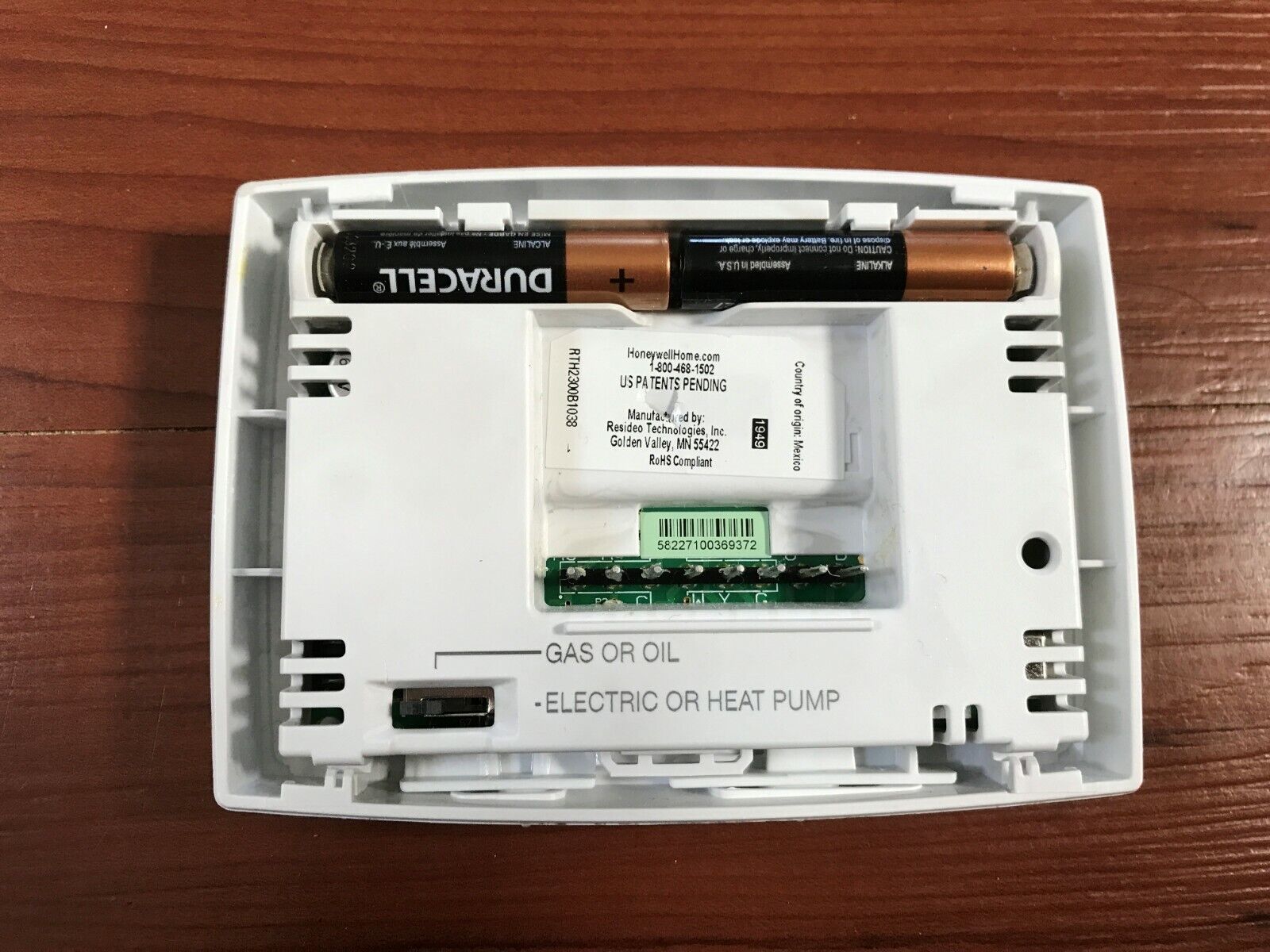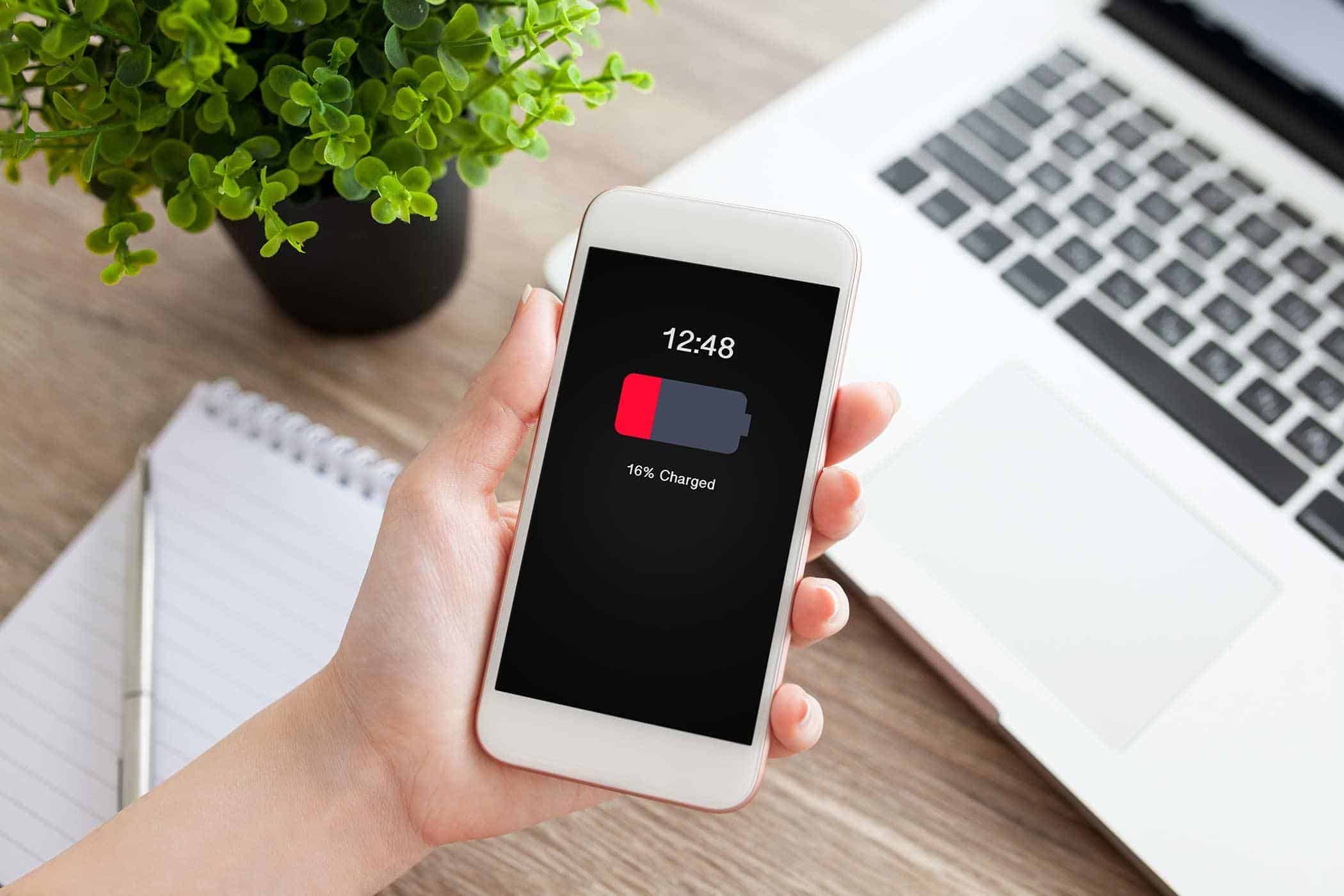Introduction
Having a reliable UPS (uninterruptible power supply) is crucial for protecting your electronic devices and ensuring uninterrupted power supply during power outages. The UPS battery plays a vital role in the overall performance and longevity of your UPS. Therefore, it is essential to understand how to make your UPS battery last longer.
In this article, we will explore a range of tips and techniques to maximize the lifespan of your UPS battery. By implementing these strategies, you can extend the battery’s life and reduce the frequency of replacements, ultimately saving you time and money.
From choosing the right UPS battery to maintaining proper charging habits, we will cover everything you need to know. Whether you use a UPS for your home office, business, or any other setting, these guidelines will help you optimize the performance of your UPS system and its battery.
Protecting your sensitive equipment and ensuring the availability of backup power goes hand in hand with taking care of the battery. By following the recommendations outlined in this article, you can enhance the overall efficiency, reliability, and longevity of your UPS battery.
Choose the Right UPS Battery
The first step in making your UPS battery last longer is selecting the right battery for your needs. Here are a few things to consider:
- Capacity: Ensure that the UPS battery has sufficient capacity to handle the load you intend to power in case of a blackout. Look for batteries with higher Ah (ampere-hour) ratings to support longer runtimes.
- Type of Battery: Two common types of UPS batteries are Valve-Regulated Lead Acid (VRLA) batteries and Lithium-Ion batteries. VRLA batteries are affordable and suitable for most applications, while Lithium-Ion batteries offer longer lifespan and faster recharging capabilities, albeit at a higher cost.
- Brand Reputation: Opt for reputable brands that are known for manufacturing high-quality UPS batteries. These brands typically provide warranties and have a track record of producing reliable products.
- Compatibility: Ensure that the battery is compatible with your UPS model. Check the specifications provided by the UPS manufacturer or consult a professional to determine the best match.
Choosing the right UPS battery is crucial as it directly affects the overall performance and durability of your UPS system. Taking the time to research and invest in a high-quality battery will pay off in the long run, reducing the risk of premature failures and costly downtime.
Use the Battery in the Correct Environment
Using the UPS battery in the correct environment is essential for maximizing its lifespan. Here are some guidelines to follow:
- Temperature: Avoid exposing the battery to extreme temperatures. High temperatures can accelerate the chemical reactions inside the battery, reducing its overall lifespan. Similarly, extremely low temperatures can affect the battery’s performance. Ensure that the battery is kept in a well-ventilated area with temperature control.
- Humidity: Excessive moisture or humidity can damage the battery and its internal components. Keep the battery away from areas prone to water leaks or excessive humidity. If your environment has high humidity, consider using a dehumidifier to maintain optimal conditions.
- Vibration: Vibrations can loosen battery connections and cause internal damage. Ensure that the battery is securely mounted and protected from excessive vibrations. If necessary, use shock-absorbing materials or mounts to minimize the impact of vibrations.
- Cleanliness: Keep the battery and its surroundings clean and dust-free. Regularly inspect the battery for any signs of corrosion or dirt buildup. Wipe it gently with a clean, dry cloth to remove any dust or debris. Dust accumulation can affect the battery’s performance and lead to overheating.
Creating the right environment for your UPS battery is crucial for its longevity and reliable performance. By ensuring appropriate temperature and humidity levels, minimizing vibrations, and keeping the battery clean, you can enhance its efficiency and extend its lifespan.
Properly Charge the UPS Battery
Properly charging the UPS battery is vital for maximizing its lifespan and ensuring optimal performance. Here are some guidelines to follow:
- Follow Manufacturer Instructions: Read the manufacturer’s instructions and guidelines for charging the UPS battery. Different batteries may have specific requirements regarding the charging process, including the initial charge, charging duration, and voltage levels.
- Use the Correct Charger: Make sure to use the charger specifically designed for your UPS battery. Using an incompatible charger can lead to undercharging or overcharging, both of which can significantly reduce the battery’s lifespan.
- Complete Charge cycles: It is recommended to perform full charge cycles on a regular basis. Allow the battery to fully discharge and then recharge it to its maximum capacity. This practice helps maintain the battery’s health and prevents the occurrence of memory effect.
- Avoid Overcharging: Overcharging the battery can cause overheating and damage the battery cells. Ensure that the charging process stops when the battery reaches its full capacity. Modern UPS systems typically have built-in charge controllers to prevent overcharging.
- Avoid Undercharging: Similarly, undercharging the battery on a regular basis can negatively impact its performance. Ensure that the battery is fully charged before putting it into use. Regularly monitoring the battery’s charge level can help ensure optimal charging.
Properly charging your UPS battery not only extends its lifespan but also ensures that it is ready to perform during power outages. By following the manufacturer’s instructions, using the correct charger, completing full charge cycles, and avoiding overcharging or undercharging, you can maintain the battery’s health and optimize its longevity.
Avoid Excessive Discharges
Avoiding excessive discharges is essential to maintain the health and longevity of your UPS battery. Here are some tips to help you prevent excessive discharges:
- Set Low Battery Warning: Most UPS systems allow you to set a low battery warning level. Adjust this setting to a suitable threshold that ensures the battery is not drained excessively before the UPS switches to battery power.
- Monitor Battery Status: Regularly monitor the battery status using the UPS display or software. This will give you an idea of the battery’s charge level and help you gauge its performance. If you notice a significant decrease in the battery’s capacity, it may be time to consider replacing it.
- Avoid Deep Discharges: Deep discharges, where the battery is completely drained, can be detrimental to its health. Try to avoid completely draining the battery whenever possible. If the UPS frequently reaches a critical low battery level, consider upgrading to a UPS with a higher capacity battery.
- Limit Power Outage Duration: While it may not always be possible, limiting the duration of power outages can help prevent excessive discharges. Having a backup power source or alternative arrangements in place can reduce the strain on the UPS battery.
Keeping a watchful eye on the UPS battery’s discharge levels and taking steps to prevent excessive discharges is key to extending its lifespan. By setting low battery warnings, monitoring battery status, avoiding deep discharges, and limiting power outage durations, you can ensure that the battery remains healthy and capable of providing backup power when needed.
Regularly Calibrate the UPS Battery
Regularly calibrating the UPS battery is an important maintenance practice that helps optimize its performance and prolong its lifespan. Calibrating the battery involves resetting the battery’s fuel gauge or charge level indicator to accurately reflect its current capacity. Here’s how you can calibrate your UPS battery effectively:
- Check Manufacturer Recommendations: Consult the manufacturer’s instructions or documentation to determine the recommended calibration process for your specific UPS model. Different manufacturers may have slightly different procedures, so it’s important to follow their guidelines.
- Run Battery on Full Load: Start by fully charging the UPS battery and then disconnecting the mains power supply. Connect a load or devices that consume the maximum power the UPS can handle. Allow the UPS to power the load until the battery is fully discharged.
- Recharge the Battery: Once the battery is fully discharged, reconnect the mains power supply and allow the battery to recharge fully. This ensures that the battery is replenished to its maximum capacity.
- Reset the Battery Gauge: After the battery has been fully charged, perform a reset or recalibration of the battery gauge. Follow the manufacturer’s instructions to complete this step accurately.
- Regularly Repeat the Process: It is recommended to calibrate the UPS battery at least once or twice a year, or as advised by the manufacturer. Regular calibration ensures that the battery gauge remains accurate and reflects the actual capacity of the battery.
Regularly calibrating the UPS battery is vital for maintaining its accuracy and prolonging its life. By following the manufacturer’s recommendations, running the battery on full load, recharging it fully, and resetting the battery gauge, you can ensure that the battery’s capacity is correctly measured and reported.
Keep the Battery Clean and Well-Maintained
Keeping the UPS battery clean and well-maintained is crucial for optimizing its performance and extending its lifespan. Here are some important tips to follow:
- Inspect Regularly: Perform regular visual inspections of the battery to check for any signs of corrosion, leaks, or damage. If you notice any issues, take appropriate action immediately, such as cleaning or replacing the battery.
- Clean the Terminals: The battery terminals can accumulate dirt, grime, or corrosion over time, affecting the battery’s performance. Clean the terminals using a solution of baking soda and water or a battery terminal cleaner with a wire brush. Be sure to disconnect the battery before cleaning the terminals and follow safety precautions.
- Secure Connections: Ensure that the battery cables and connections are properly secured. Loose or corroded connections can lead to voltage drops and inefficient power transfer. Tighten any loose connections and replace any damaged cables.
- Avoid Overcharging: Overcharging the battery can cause it to heat up, potentially leading to leaks or damage. Monitor the charging of the battery and ensure that it is not being overcharged. Modern UPS systems typically have built-in charging controls to prevent overcharging.
- Follow Battery Maintenance Guidelines: Consult the manufacturer’s guidelines for specific maintenance instructions related to your UPS battery. Some batteries may require specific maintenance procedures, such as adding distilled water to flooded lead-acid batteries.
By regularly inspecting and cleaning the battery, ensuring secure connections, avoiding overcharging, and following manufacturer’s maintenance guidelines, you can keep the UPS battery in optimal condition. This will not only prolong its lifespan but also maximize its efficiency and reliability when you need backup power the most.
Monitor and Manage the UPS Battery’s Temperature
Monitoring and managing the temperature of the UPS battery is crucial for its longevity and optimal performance. Here are some tips to help you maintain the appropriate temperature for your UPS battery:
- Keep an Eye on Temperature: Regularly monitor the temperature of the battery to ensure it remains within the recommended operating range. Most UPS batteries operate best within a temperature range of 20-25 degrees Celsius (68-77 degrees Fahrenheit).
- Provide Adequate Ventilation: Ensure that the UPS battery is located in a well-ventilated area. Proper airflow helps dissipate heat and prevents the battery from overheating. Avoid placing the UPS in enclosed spaces or near heat-generating equipment.
- Install Cooling Systems: If the battery is subjected to high ambient temperatures, consider installing additional cooling systems, such as fans or air conditioning units, to maintain optimal temperature levels. This is particularly important in areas with hot climates or poorly ventilated spaces.
- Use Temperature Monitoring Devices: Utilize temperature monitoring devices or UPS software that provides real-time temperature readings of the battery. This allows you to promptly identify any temperature fluctuations or prolonged exposure to extreme temperatures.
- Take Precautions in Extreme Conditions: In situations where the temperature exceeds the recommended range, take additional precautions such as reducing the load on the UPS, shifting the battery to a cooler location, or implementing temporary cooling measures.
Properly monitoring and managing the temperature of your UPS battery is essential for its long-term health and functionality. By regularly checking the temperature, providing adequate ventilation, installing cooling systems as needed, using temperature monitoring devices, and taking precautions in extreme conditions, you can help ensure that the UPS battery operates within the optimal temperature range and prolong its lifespan.
Take Precautions During Periods of Extended Non-Use
When your UPS battery is not in use for an extended period, it’s important to take certain precautions to maintain its health and prolong its lifespan. Here are some essential tips to follow during periods of non-use:
- Keep the Battery Charged: Ensure that the battery is fully charged before storing it for an extended period. A fully charged battery is less likely to experience any degradation or loss of capacity during the storage period.
- Store in a Cool, Dry Place: Find a cool and dry location to store the battery. Avoid areas with high humidity or extreme temperatures, as they can adversely affect the battery’s performance.
- Disconnect from the UPS System: If possible, disconnect the UPS battery from the UPS system during periods of non-use. This can help prevent any discharge of the battery due to the standby power consumption of the UPS.
- Regularly Check the Battery’s Charge Level: Periodically check the charge level of the battery during its storage period. If the charge drops significantly, recharge the battery to maintain its health and prevent self-discharge.
- Follow Manufacturer’s Guidelines: Consult the manufacturer’s guidelines for specific recommendations regarding long-term storage of the UPS battery. They may provide additional instructions based on the battery type and technology.
By taking precautions during periods of extended non-use, you can ensure that your UPS battery remains in optimal condition and retains its capacity when it is needed again. Keeping the battery charged, storing it in a suitable environment, disconnecting it from the UPS system, checking the charge level periodically, and following the manufacturer’s guidelines will help prolong the battery’s lifespan and maintain its readiness for future use.
Consider Investing in a UPS with Battery Management Technology
To further enhance the lifespan and performance of your UPS battery, it is worth considering investing in a UPS system that incorporates advanced battery management technology. Here are some reasons why this can be beneficial:
- Enhanced Charging Techniques: UPS systems with battery management technology utilize sophisticated charging techniques that optimize the battery’s charging process. This helps prevent overcharging, undercharging, and other common issues that can negatively impact battery health.
- Battery Health Monitoring: These UPS systems often have built-in monitoring capabilities that provide real-time information on the battery’s health, capacity, and performance. This allows you to easily monitor the battery’s condition and take necessary actions if any abnormalities are detected.
- Automatic Battery Testing: Some UPS systems with battery management technology can perform regular battery tests automatically. These tests assess the battery’s capacity and performance, providing early warnings if any issues arise.
- Advanced Alerts and Notifications: These UPS systems can send alerts or notifications via email or other means when the battery requires attention, such as low charge, high temperature, or other potential problems. This allows for proactive maintenance and prompt actions before any critical failures occur.
- Intelligent Energy Saving Features: UPS systems with battery management technology often include intelligent energy-saving features. These features automatically adjust the UPS’s output and battery usage based on the connected load, optimizing efficiency and extending runtime.
Investing in a UPS with battery management technology can provide numerous benefits, including improved battery charging techniques, real-time monitoring, automatic battery testing, advanced alerts, and intelligent energy-saving capabilities. These features work together to maximize battery lifespan, ensure reliable backup power, and simplify battery maintenance tasks.
Conclusion
Taking steps to make your UPS battery last longer is essential for ensuring reliable backup power and minimizing downtime. By implementing the following strategies, you can optimize the performance and extend the lifespan of your UPS battery:
- Choose the right UPS battery for your specific needs, considering factors such as capacity, type, brand reputation, and compatibility.
- Use the battery in the correct environment, maintaining suitable temperature and humidity levels and minimizing vibrations.
- Properly charge the battery, following manufacturer instructions, using the correct charger, and avoiding overcharging or undercharging.
- Avoid excessive discharges by setting low battery warnings, monitoring battery status, and limiting power outage durations.
- Regularly calibrate the battery to accurately reflect its capacity and maintain its health.
- Keep the battery clean and well-maintained, inspecting it regularly, cleaning the terminals, securing connections, and following manufacturer guidelines.
- Monitor and manage the battery’s temperature, ensuring it operates within the recommended range and taking precautions in extreme conditions.
- Take precautions during periods of extended non-use, keeping the battery charged, storing it in a suitable environment, and following manufacturer recommendations.
- Consider investing in a UPS with battery management technology to benefit from advanced charging techniques, battery health monitoring, automatic testing, alerts and notifications, and energy-saving features.
By following these guidelines, you can maximize the lifespan of your UPS battery and ensure that it remains reliable when you need backup power the most. Remember, proper care and maintenance of your UPS battery not only save you time and money but also contribute to the smooth operation of your electronic devices and business productivity.

























